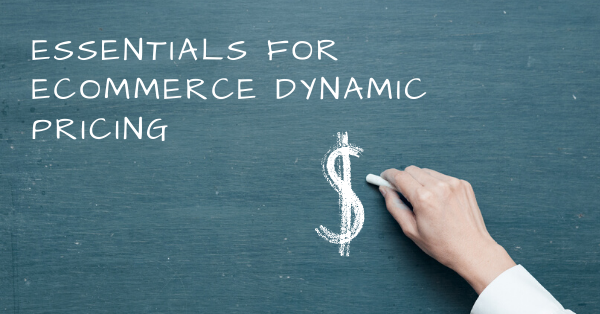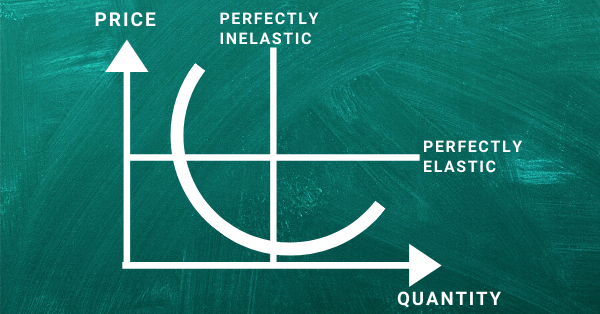Dynamic Pricing Strategy: Essentials explained
Dynamic pricing strategy has caused some serious fuss out there, right?
In the fast-paced world of eCommerce, changes are happening on a daily basis. A lot of factors need to be considered in order to stay ahead of your competition. Let’s start by tackling the hardest – dynamic pricing strategy.
For starters, this strategy allows price changes based on market demand. Therefore, a dynamic pricing strategy is also referred to as repricing, or real-time pricing since the prices are highly flexible. This pricing method is ‘a go-to’ option to ensure business profitability.

As tempting as this may sound, repricing isn’t something to be taken lightly. So, let’s discuss what is essential for setting a profitable dynamic pricing strategy.
Are your prices competitive?
A very obvious question to start with. But you wouldn’t believe how many companies start changing the prices without conducting research first.
You might already have a good reputation on the market, but are you currently happy with your sales? You aren’t lonely in the market. So, every price change must start by answering one of the most important questions. Do you really know your competitors? By that, we mean that you’re aware of their position on the market and where do you stand compared to them? It’s crucial to know where you stand before you actually start doing something about it. You need to use your initial position as a benchmark.
Some of you might have issues with customer loyalty. Others want to increase sales by becoming more competitive in the market. In any case, you need to consider how your pricing affects your sales.
We’ll give you some insight into the most recent research on online shopping behavior. You’ll see that it’s very important for a dynamic pricing strategy.
Dynamic pricing strategy: What do the numbers say?
Customers want to get their hands on the best deal regardless if they’re shopping online or in brick-and-mortar stores. Therefore, they’ve developed a habit of comparing the prices before making the purchase. The internet only made things easier. Shoppers won’t be lazy to visit 5-10 webshops just to see who’s selling for the cheapest price. Or, they will simply visit a price comparison or marketplace websites like Google Shopping or Amazon and find the best deals online. With so many competitors out there, it’s essential that you’re aware of their actions. In that way, you’ll be able to implement a dynamic pricing strategy into your business.
Let’s put this into numbers to have a more clear picture.
- Did you know that 81% of shoppers conduct online research before buying a product? (Bizfeel)
- Even if consumers wish to make the purchase in a physical store, they still do their research online first. A recent study shows that 80% of consumers compare prices in all categories before purchasing in a physical location.
- Customers tend to visit at least three websites on average before making their purchase decision. The more money they are willing to spend on a product, the longer they’re going to be researching the best deals online. For instance, when it comes to laptops, customers tend to spend much longer to compare prices, than when they compare book prices. 36% of online shoppers say they spend time to find out which site stocks their desired item at the lowest price.
As you can see, shoppers are not that naive. So, changing the prices randomly won’t get you anywhere. This needs to be done carefully, and what a better way than to use repricing.
The purpose of price monitoring is to get precise and up-to-date price intelligence. Then you will use it to base your dynamic pricing strategy decision on.
Now you saw how important doing research is. Let’s go through some essential tips for establishing desirable product prices.
1. Conduct a Price Elasticity Analysis
You don’t have to be an economist to know that sales go down when the price increases and vice versa. It’s no secret that people are looking for cheaper options. But, that still doesn’t mean that you are supposed to reduce the price just for the sake of being the cheapest on the market. Before deciding on making any price change, you need to perform price elasticity analysis. As the name says, price elasticity will show you to which extent are your prices flexible to changes. How much can prices be reduced or raised before sales are affected? How many people would still buy regardless of the price change? These are the questions that price elasticity will answer you. Although it’s great to set a dynamic pricing strategy and be able to react in real-time, not all price changes are suitable for every business.

2. Value-Based Pricing
Value-based pricing means setting a price based on how much the customer believes what you’re selling is worthed. Some customer actions might seem irritational at first sight. For example, deciding on a product that is more expensive. In fact, customers are really willing to pay more even if there is a similar product offered in the market. The reason behind this is connected to how customers consider the value of your product. In case they think that your product will offer them some extra value, they’ll be willing to pay more. Therefore, a dynamic pricing strategy doesn’t necessarily mean that your prices need to be the lowest.
3. How to make your prices appealing?
Psychology has found its way into many areas, and price definitions are no exception. In fact, there’s a whole approach dedicated to this – charm pricing. Charm Pricing is based on psychological aspects that can be used to persuade customers into making a purchase.
Have you ever been to a store or watched a commercial and found yourself wondering why some products are displayed with “strange” prices, like $12.99? This is because people tend to focus only on the digits on the left side. Therefore, they consider the price closer to $12, instead of to $13, which would, of course, make more sense. So, when the price ends with number 9, our brain perceives it as cheaper. This is called the “left digit effect in price cognition”.
4. Price as a category indicator
As we mentioned, a dynamic pricing strategy doesn’t always mean that you need to have the lowest price out there. Depending on the market type that you’re a part of, the price can be used as a category indicator. If you’re a part of the market where luxury products are being sold, it’s not so smart to have a low price. Sometimes, if your price is higher, customers will link it with luxury and quality. This is often the case with tech and fashion industry where the clients associate higher prices with quality. For example, Apple uses this strategy when pricing their products.
Wrapping it up
To become and remain successful in eCommerce is a long-term task. There is no one size fit for all. The only way to find what pricing strategy is the most suitable for your business is to do some tests. However, dynamic pricing definitely is a go-to option. But as we explained, you need to think it through and find the right help.
We invite you to test Price2Spy for this purpose by signing up for a free trial!
Would you like to add some points that you personally find essential for a dynamic pricing strategy? Share it with us in the comments below!



